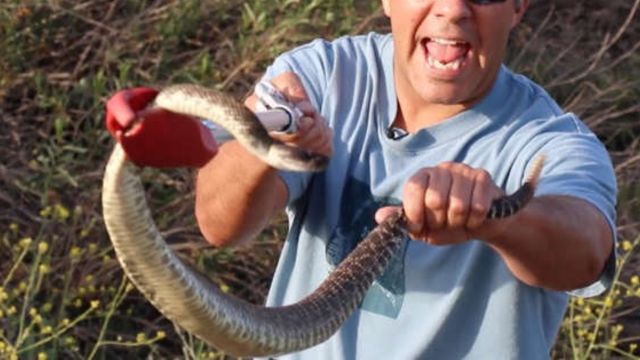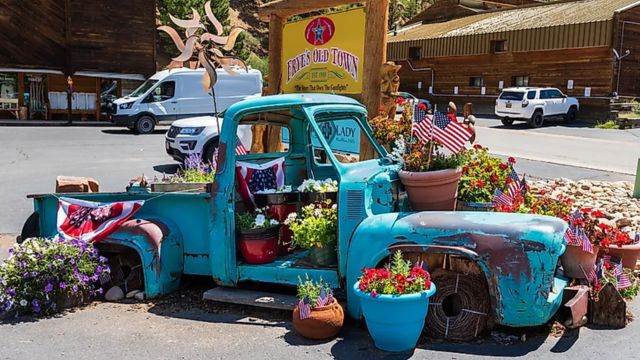A variety of adventures are drawn to South Dakota’s rugged beauty by its winding riverbanks, which stretch from plains to rocky outcrops.
However, the single poisonous snake native to the state, the prairie rattlesnake (Crotalus viridis), is also one of its least welcome inhabitants.
South Dakota snakes thrive due to the state’s warm, dry environment and diverse topography; in fact, the state’s western regions are home to sizable rattlesnake populations.
The venom of the prairie rattlesnake is extremely deadly and can be fatal if left untreated. As a result, anyone entering its land must show respect and use caution.
Knowing the areas where these reptiles are most active not only makes campers and outdoor enthusiasts more educated, but it also ensures a fun and safe experience.
Grand River National Grassland
The Grand River National Grassland in northwest South Dakota, which covers 154,000 acres, provides a variety of historical and geographical landscapes that are ideal for outdoor adventure.
A network of routes, like the Blacktail Trail, allows one to stroll across vast prairies and untamed areas where deer, birds, and prairie dogs have established their homes. In addition to some rough camping, the area around Shadehill Reservoir offers excellent walleye and other game fish fishing.
Hunting for deer, antelope, grouse, and ducks is also common during certain seasons. Prior to federal conservation work restoring its deteriorated prairies following the Dust Bowl era, the region was inhabited by Indigenous peoples, including the Lakota Sioux, and later witnessed colonization under the Homestead Act.
Lake Francis Case
With its varied activities and rich history, the Missouri River area is a dynamic mix of forests, rocky bluffs, and grasslands. Hiking, boating, and fishing are all excellent in this region, which includes Lake Francis Case, a 100,000-acre reservoir that spans more than 100 miles.
While hikers can explore paths with chances to see wildlife like deer, prairie dogs, and many bird species, anglers can enjoy fishing for walleye and bass.
Native American culture and the Lewis and Clark Expedition, which recorded the river’s abundant biodiversity, are both profoundly ingrained in its history. There are many prairie rattlesnakes due to the terrain’s undulating prairies and forests, especially west of the river.
Since these snakes blend in perfectly with the surroundings and are most active during the summer months, especially June through August, visitors are advised to exercise caution.
Black Hills Region
Black Elk Peak, which rises to 7,242 feet, is the tallest peak in the 5,000-square-mile Black Hills, a spectacular outburst of South Dakota’s Great Plains.
From simple, rolling trails through untamed landscape to prairies teeming with animals, including deer and prairie dogs, this mountain range is an outdoor enthusiast’s dream come true.
Warning: These are the 5 Most Rattlesnake-Infested Areas in Texas
Hunting is restricted during certain seasons, although there are plenty of opportunities for camping and fishing in the nearby reservoirs.
The Black Hills were a place of significant change during the Gold Rush of the 19th century, which altered the terrain and cultures, and they hold considerable cultural significance in the Lakota people’s history. Its diverse geology includes streams, sandstone outcrops, and prairie.
It is also known to support rattlesnakes up to five feet long. Despite their lack of aggression, visitors should be cautious around rocky places because these snakes are well-camouflaged.
Custer State Park
Custer State Park spans over 71,000 acres in the Black Hills of South Dakota, a vast expanse of farmland and rugged mountains. Rocky outcrops in prairies and parks are home to prairie rattlesnakes.
These areas are also good places to host a wide variety of wildlife, which contributes to a few incidents, such as the regrettable death of a curious park burro in June of this year from a poisonous snake.
Aside from rattlesnakes, the park’s iconic inhabitants—bison, elk, and pronghorn—attract naturalists with a crucial message: pay attention to nature, treat animals with care, and enjoy this great park in a responsible manner.
Rattlesnake Warning: The 5 Most Dangerous Areas in Louisiana You Need to Know
Lake Oahe
Stretching 231 miles from central South Dakota into southern North Dakota along the Missouri River, it is one of the biggest reservoirs in the United States. The shoreline of Lake Oahe is more than 2,250 km long.
The lake was created in 1958 when the Oahe Dam was built as part of the Missouri River Basin Project, which sought to regulate flooding and provide irrigation, hydroelectric power, and other benefits.
Its roughly 370,000 acres of waters maintain a diverse environment that makes fishing, boating, and camping possible. One of those lakes that draws fishermen from all over the nation is Lake Oahe, which is well-known for its superb walleye fishing.
It is more aesthetically pleasing due to the nearby plains and bluffs, which offer opportunities for hiking and wildlife viewing. Prairie rattlesnakes are also supported by the lake’s varied habitats in the adjacent grassy and rocky areas, which naturally contributes to the ecological balance of the area.
Safety Advice for Visiting Rattlesnake Habitats in South Dakota
Visitors to South Dakota can enjoy a wide variety of outdoor activities as the state’s varied ecosystems and rich history coexist with the unadulterated beauty of the landscape.
These places provide everything from hiking, camping, fishing, and animal viewing in the Missouri River valley, the untamed Black Hills, and the serene shoreline of Lake Francis Case.
Visitors should be mindful of the surrounding fauna, particularly the prairie rattlesnakes. Despite their venom, these reptiles maintain ecological balance by controlling the numbers of tiny mammals.
Because of their excellent camouflage, rattlesnakes are typically unseen, especially during the warmer months when they are active. They can be found in grasslands, along rocky bluffs, and close to streams.







Leave a Comment